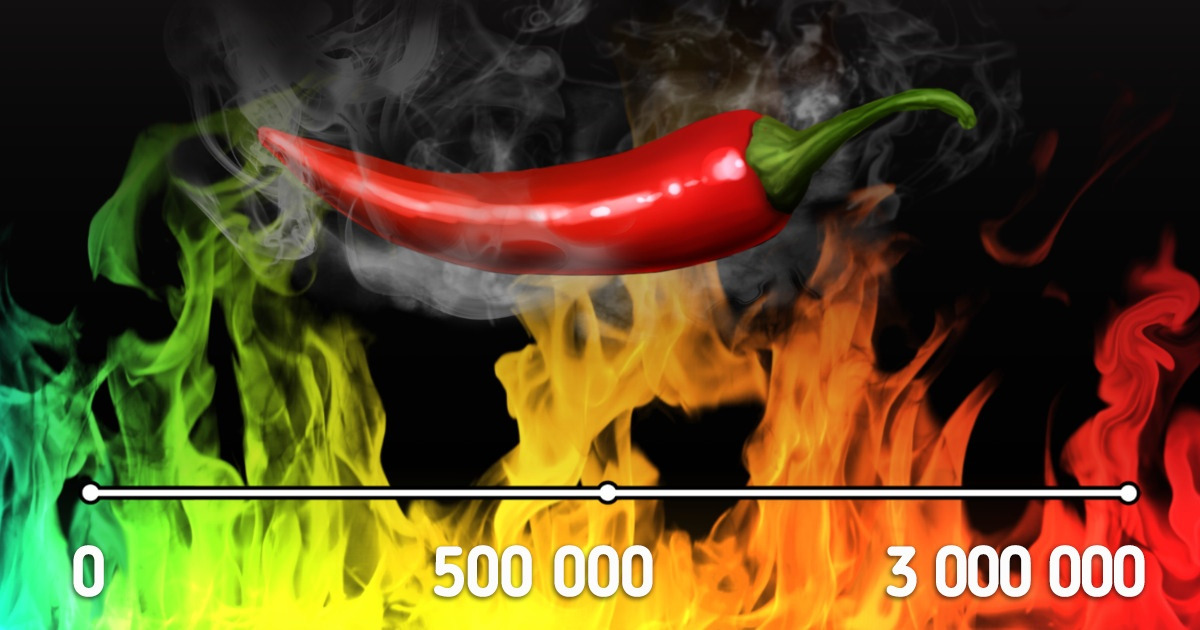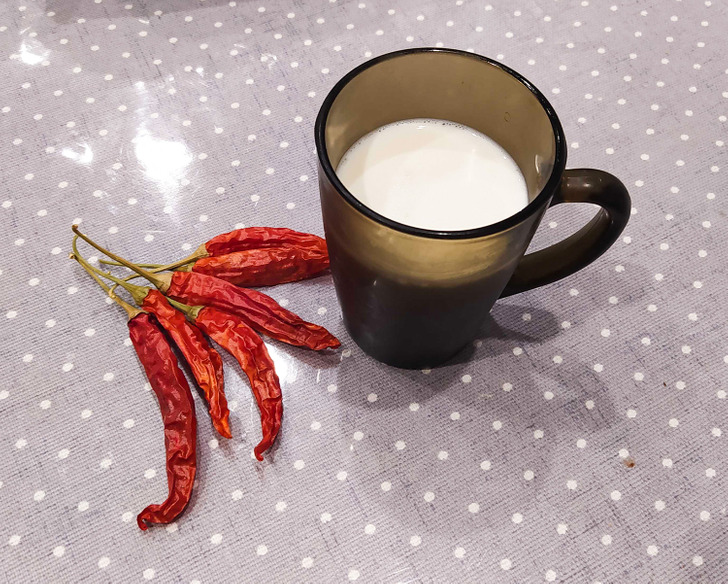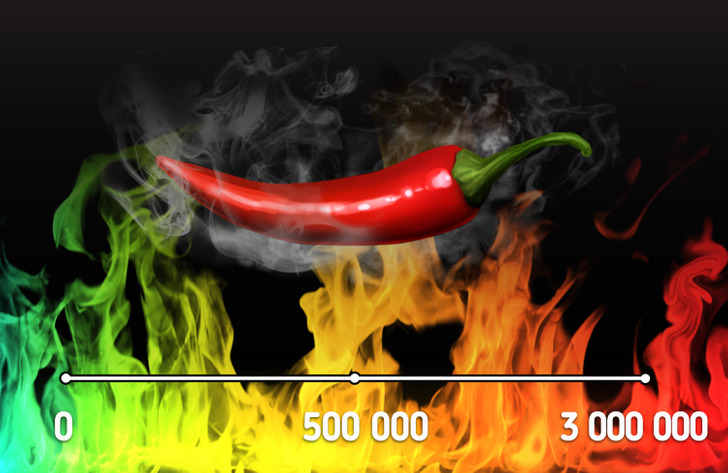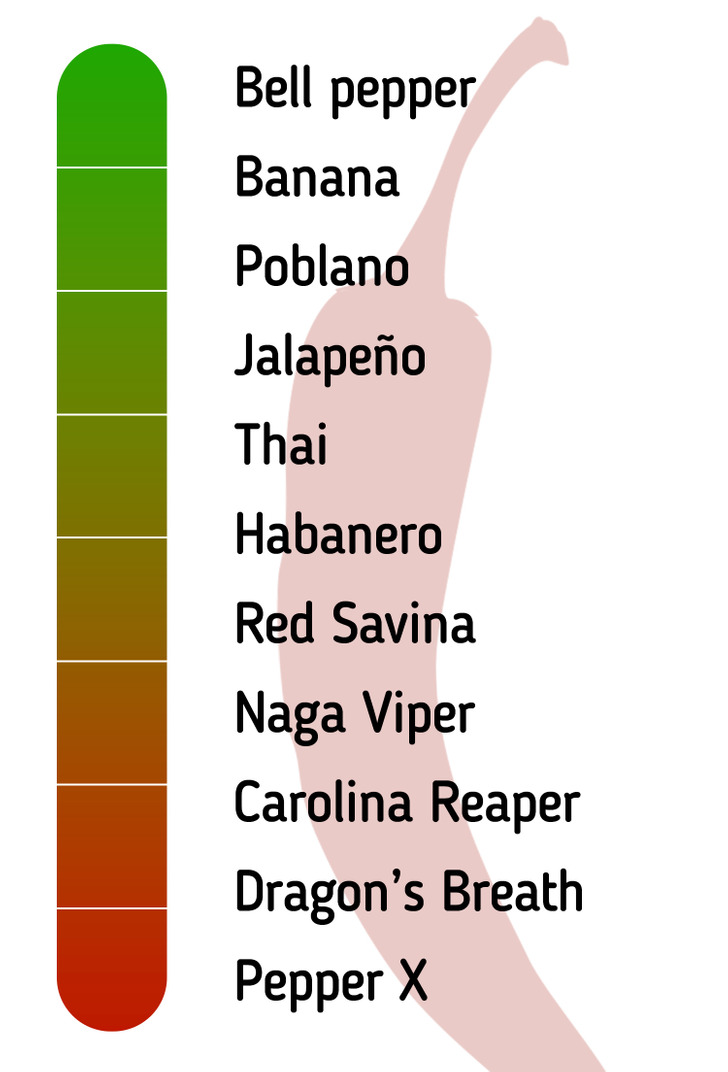What the Scoville Scale Is, and How to Use It

If you’ve wondered why some types of peppers are sweet and others make your taste buds burn, this article will give you the answer.
5-Minute Crafts found out what the Scoville scale is and why all types of peppers taste different.
Why peppers are spicy
The chemical that makes us feel spiciness when we bite a pepper is called capsaicin. It gives a burning sensation in any tissue of the body it comes into contact with. Its highest concentration is in the placental tissue and the internal membranes of peppers. It is interesting that capsaicin only causes discomfort in mammals, including people, but birds can’t feel it.
Who Scoville is

Wilbur Lincoln Scoville was an American pharmacist best known for his creation of the “Scoville Organoleptic Test” to measure the spiciness of different types of peppers. Later, it was named the Scoville scale. He also wrote the book, The Art of Compounding. It is one of the first mentions of milk as something that can neutralize the burning sensation caused by peppers.
What the Scoville scale is

The Scoville scale measures how spicy a pepper is. It’s measured in Scoville Heat Units (SHU).
This scale was developed this way:
- Dried pepper was dissolved in alcohol to extract the heat components (capsaicinoids) responsible for spiciness.
- The pepper solution was diluted in sugar water.
- The number of times the pepper solution had to be diluted until the spiciness disappeared was counted.
A panel of 5 people served as taste testers. Each of them determined how spicy the liquid was. At least 3 of them had to have the same estimation. Based on this data, the Scoville scale was developed.
Because all people have a different number of taste buds, this scale is quite subjective.
Since 1980, pepper spiciness has been determined by a different method considered to be faster and more effective. It’s called high-performance liquid chromatography (HPLC). When the results were converted into SHU, it was noted that the numbers were around 20%-40% lower than that in the Scoville method.

The higher the number on the Scoville scale, the spicier the pepper.
The following types of peppers have the lowest numbers from 0 SHU:
The maximum numbers, from 1,500,000 to 3,000,000 SHU, are reached in these types:
- Carolina Reaper — up to 2,200,000 SHU
- Dragon’s Breath — 2,480,000 SHU
- Pepper X — 3,180,000 SHU
The middle part of the scale is occupied by a lot of types, and here are some of them:
- Cubanelle — 1,000 SHU
- Poblano — 1,000-1,500 SHU
- Jalapeño — 4,000-8,500 SHU
- Cheongyang chili — 10,000 SHU
- Serrano — 10,000-23,000 SHU
- Cayenne — 30,000-50,000 SHU
- Thai chili — 50,000-100,000 SHU
- Scotch bonnet — 100,000-350,000 SHU
- Habanero — 100,000-350,000 SHU
- Red Savina — 350,000-577,000 SHU
- Infinity chili — 1,067,286 SHU
- Trinidad Moruga scorpion — 1,200,000 SHU
- Naga Viper — 1,382,118 SHU
The Scoville scale isn’t only used for peppers. For example, resiniferatoxin found in resin spurge, a cactus-like plant, would have the spiciness of 16,000,000,000 SHU.